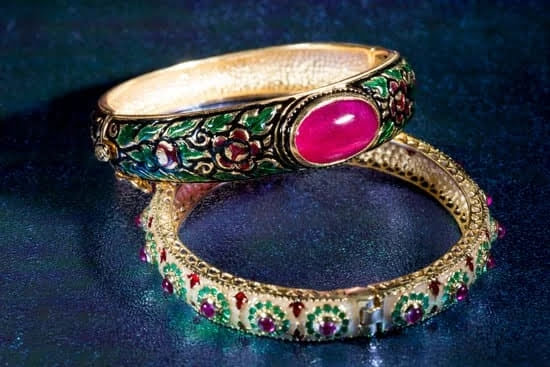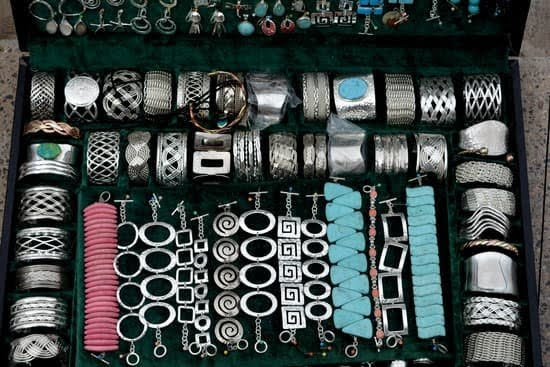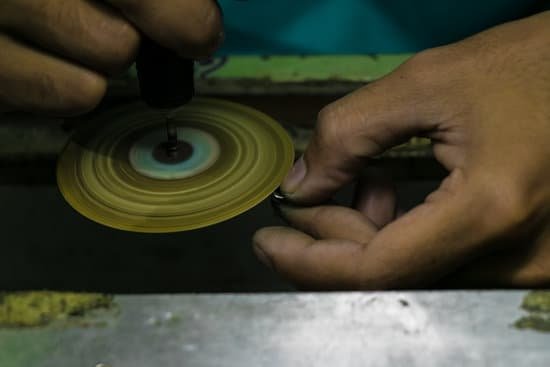Introduction
Pot metal jewelry was popular from the late 1800s to the middle of the 20th century. It consists of a base alloy made primarily of zinc, plus a combination of other metals such as nickel, copper, and lead. Jewelers used pot metal because it was relatively inexpensive and easy to work with compared to more expensive silver or gold alloys. However, pot metal often contained high concentrations of lead and other potentially toxic materials which can be detrimental to people’s health.
Identifying Pot Metal Jewelry:
To identify pot metal jewelry, examine its surface and look for signs that adversely react to chemical tests such as nitric acid or ammonium hydroxide. Additionally, if you hear an audible ping when tapping on the piece with a non-metallic object, this is another sign it is composed of pot metal. Jewelry created from pot metal may also have a dark coloration compared to silver or gold pieces due to its higher levels of lead content. Consider sending the piece out to a professional lab for testing if unsure about your findings.
Benefits of Identifying Pot Metal Jewelry
Identifying pot metal jewelry can be incredibly beneficial for those looking to assess the value and authenticity of their pieces. Pot Metal jewelry, also known as white metal, is a type of metal alloy which contains different metals such as zinc, lead and tin. It is often used in costume or fashion jewelry as it is more affordable than silver or gold, however it generally has a lower quality. Identifying this type of jewelry can help you determine which pieces may need repair or require special care and attention when cleaning or storing. Additionally, being able to identify it allows you to accurately assess its monetary value so that if you decide to sell it on, you can do so at the right price. Furthermore, while lower quality than gold and silver, certain pieces are collectible due to their age or previous use. Being able to identify pot metal jewelry will allow you determine which items are worth collecting and display in your home. Finally, by understanding pot metal better and knowing the signs of wear and tear it shows over time compared with other precious metals such as gold or silver gives peace of mind when wearing your jewelry out for special occasions
Common Materials and Elements in Pot Metal Jewelry
Pot metal jewelry is a type of costume jewelry known for its distinct, low cost design and manufacturing. It’s made of alloys with a low melting point, often including elements such as nickel, zinc, copper, lead and tin. The alloys give it a softer-than-traditional metal feel. Other signs to look out for include an unusually dark coloration when compared to other metals like gold or silver, as well as fragility when attempting to work the metal into shapes and designs. Pot metal jewelry can also display a blue green patina due to oxidation of the metals involved in its composition.
Due to the nature of pot metal and the range of elements used in it’s composition, it can be difficult to identify without proper testing equipment. Two popular tests that may help differentiate this type of jewelry are the use of a magnet (magnetic materials will be attracted towards it) and by taking a file or fingernail against the surface (pot metal scratches very easily). Additionally specific types of acids can be employed that react differently when contacted with different kinds of alloys.
Identifying Pot Metal Jewelry Visually
Pot metal jewelry can be identified visually by its appearance. It will often appear to be a dull gray color with a matte finish, while other types of metals will typically have a much brighter appearance or shine. Additionally, pot metal jewelry is usually quite thin or lightweight and may look flimsy compared to other types of jewelry. Other signs that a piece of jewelry may be pot metal include discoloration in the metal due to oxidation and the presence of bubbles or pits in the surface. If a piece of jewelry does not contain any identifiable markings such as logos or hallmarks, it’s likely made from pot metal as gold, silver, and platinum are typically branded in some way on the surface. Finally, if a piece of jewelry is extremely inexpensive when purchased from an unknown source, it’s likely made from pot metal or an inferior quality alloy.
Testing Pot Metal Jewelry for Authenticity
When it comes to identifying pot metal jewelry, there are a variety of techniques that can be used. The most recommended and reliable method is testing the metal content of the jewelry item in question. This can be done through a variety of methods, such as using a precious metal detecting kit or having the piece tested at a reputable jeweller’s. To do this, scrape away some of the visible metal in order to acquire a sample for testing. If you don’t have access to these tools, however, other forms of testing exist.
The ‘ring test’ is one such method—simply press down on the metal with your fingernail; if it makes an indentation, it is likely not genuine metal. An even simpler and more accessible method is the magnet test – typically if your magnet sticks to the jewelry piece in question it is made from some type of cheap metal with ferrous elements such as iron or steel, which also means it is likely not an original or genuine piece and thus made from “pot metal.” Away from physical tests, additional methods exist in terms of written analysis. According to Mr. Ronald Kinsey (2019), when inspecting vintage pieces for example you may want to research common descriptions associated with pot metal for reference purposes; keywords such as antique bronze, pewter or any combination of words containing those two should help you identify certain types of pot metals quickly and accurately.
Tips for Verifying Genuineness of Pot Metal Jewelry
Pot metal jewelry is a type of low-cost jewelry made from alloys with a high zinc content. As the name suggests, pot metal was originally created as scrap left over from melting down other metals into pots and pans. It’s a durable, lightweight metal easily molded and mass-produced by manufacturers. Considering its economical cost, it quickly gained popular use during the Victorian era in America and Europe.
When looking to buy or sell pot metal jewelry, it’s important to know how to identify its unique characteristics in order to verify its authenticity. Here are some tell-tale signs that an item may be pot metal:
1) The Color – Pot metal can range in color from silvery white to dull grey or yellowish hues. Its metallic sheen stands out against other similarly colored fairings such as silver or gold plating.
2) The Weight – Pot metal is a lightweight material due to its high zinc content so it will feel much lighter than pure gold or silver when weighting it on your hands. Many pieces of such low cost jewelry also lack any associated hallmarks which is another indicator of pot metal quality items.
3) The Wear – As pot metal is soft and malleable, the surface tends to wear down quickly with use resulting in scratches, tarnish, and minor dents. If an item seems extra worn then it might be a sign that it has been made out of this type of alloy.
4) The Number – One final way of confirming if something is made out of pot metal alloy would be taking note how often you see other similar items on the market or at antique stores—pot metals were produced in vast amounts during certain eras making them easy to come by even today.
Other Ways to Understand Pot Metal Jewelry
Pot metal jewelry is a type of costume jewelry popular in the late 19th century and early 20th century. It was often made of a mix of zinc, copper, tin, nickel, and lead that came together to form very inexpensive jewelry. Before purchasing vintage pot metal jewelry, it is important to identify what it is and understand its value. To do this, there are a few key factors to look out for when differentiating it from other types of vintage jewelry.
Other than the main determinants already mentioned above, one can make their decision based on the coloration of the item itself. Pot metal generally has an silvery-grey or grayish hue which stands out amongst metals like sterling silver or gold-plated items. The weight is another factor when detecting this form of jewelry; being much lighter than other kinds due to its heavy reliance on alloy parts rather than pure precious metals. Its formation process also allows for greater flexibility and malleability which results in distinctively shaped designs and detailing often unreplicated by modern jewelry pieces. Finally, signatures found on these items will confirm this style; many makers having stamped them with an identifying maker’s mark that would reveal the originator’s name and place of production etc. All these points should be taken into account when assessing an item made at any point during this time period.
Conclusion
In conclusion, it is important to be aware of the differences between pot metal jewelry and other forms of jewelry. By understanding what pot metal jewelry is and how to identify it, you can make educated decisions when buying and selling jewelry pieces. To protect yourself and your investment, remember to always ask a seller what type of metal a particular piece is made out of before making a purchase. Additionally, if something seems too good to be true in terms of price, it likely is – this could indicate that the piece is made out of pot metal. Taking these precautions will help you avoid unnecessary losses due to purchasing potentially low quality items or being misled by sellers who are trying to pass off pot metal as another precious or semi-precious material. Be knowledgeable about the materials used in your jewelry purchases so you can enjoy them safely for many years to come.

Welcome to my jewelry blog! My name is Sarah and I am the owner of this blog.
I love making jewelry and sharing my creations with others.
So whether you’re someone who loves wearing jewelry yourself or simply enjoys learning about it, be sure to check out my blog for insightful posts on everything related to this exciting topic!





